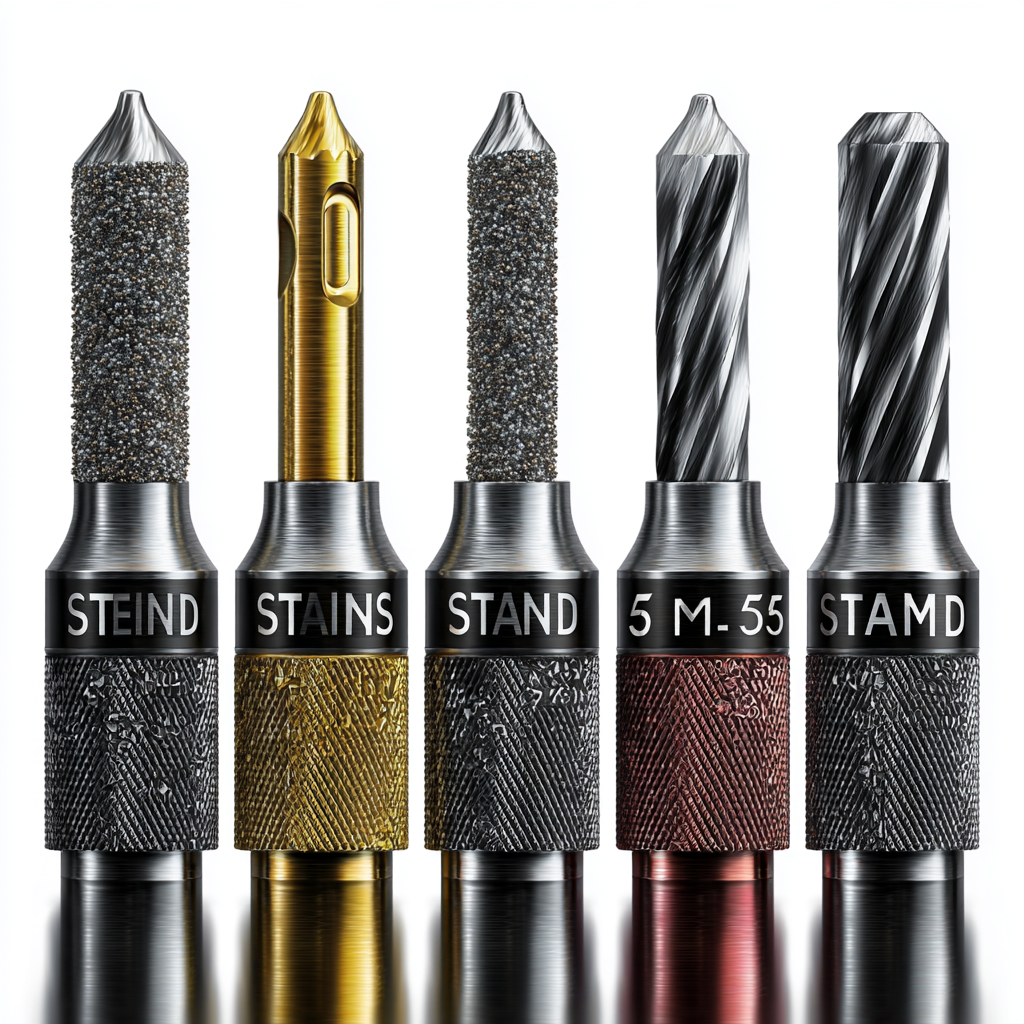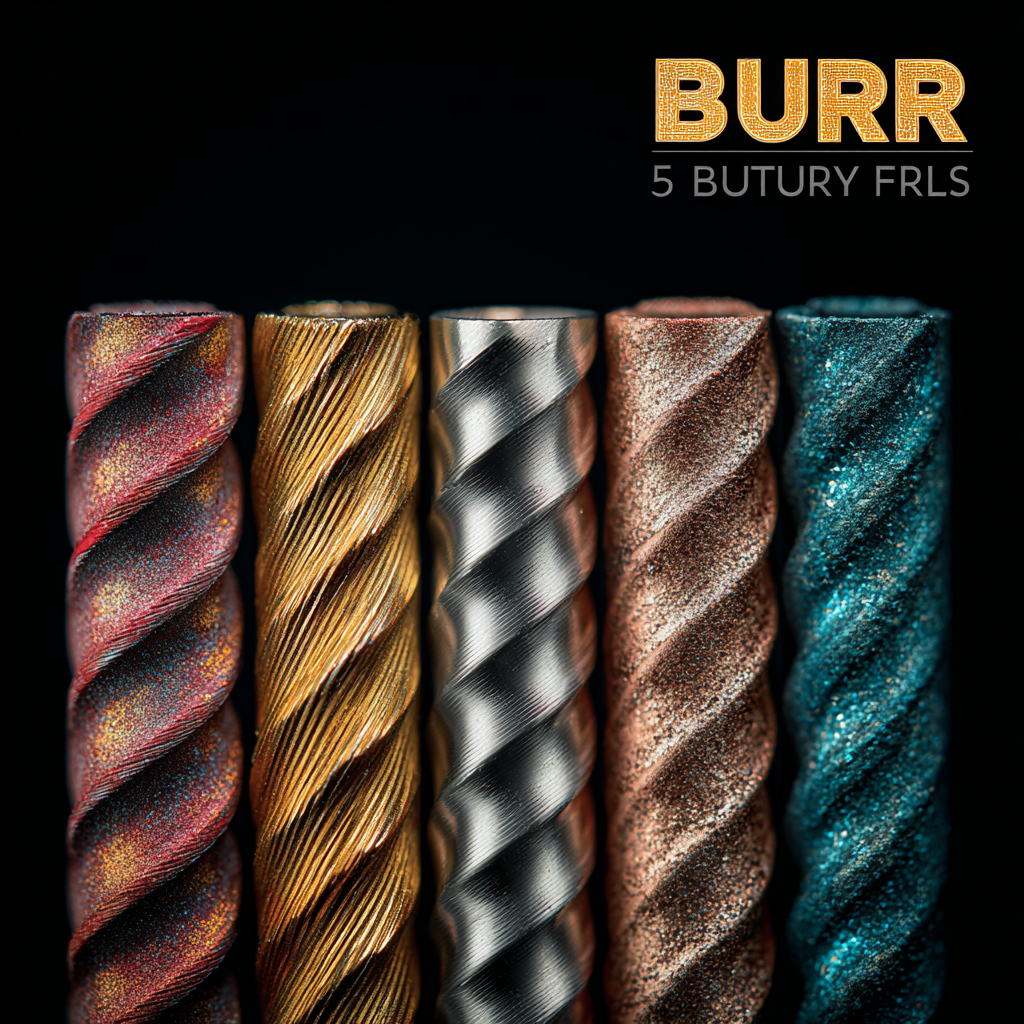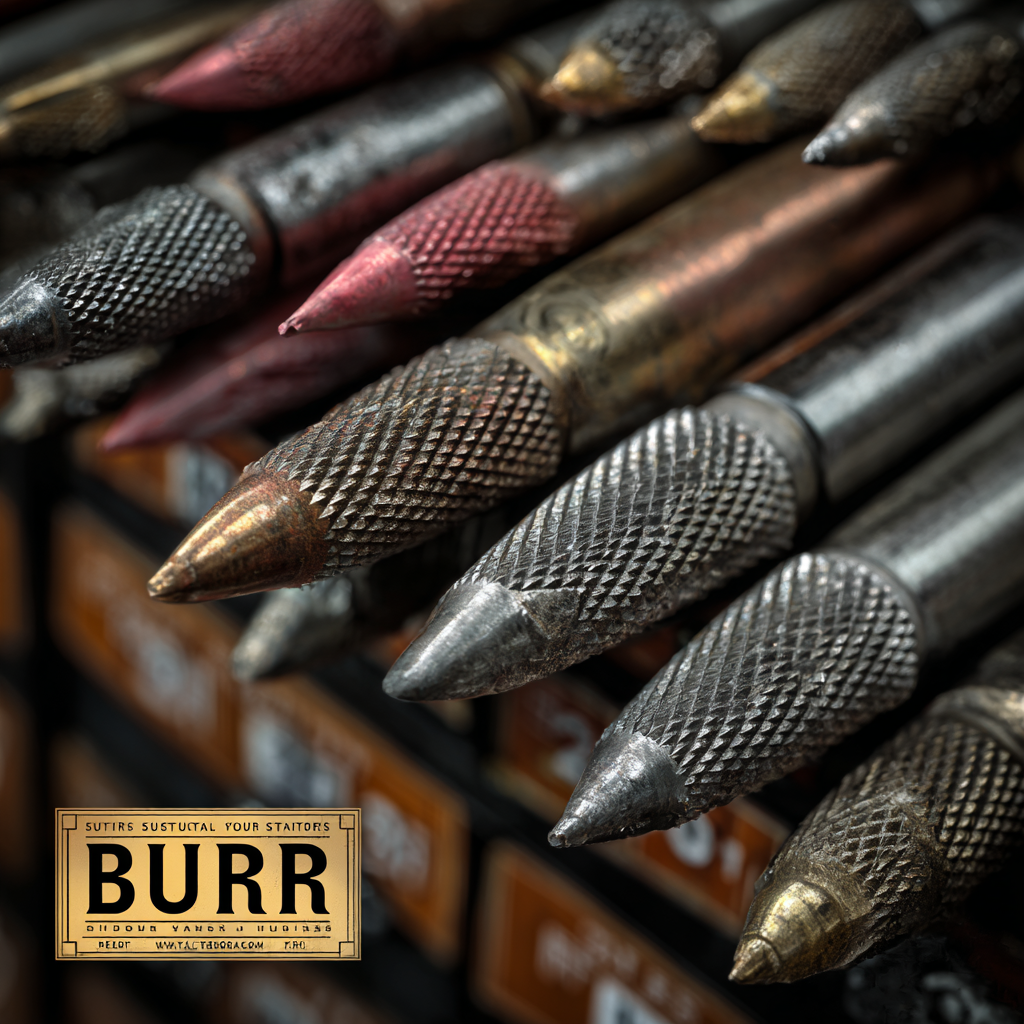Leave your message now to get your free sample and discount price
Leave your message now to get your free sample and discount price
In the ever-evolving landscape of manufacturing and craftsmanship, selecting the right tools is crucial for achieving precision and efficiency. Among these essential tools, the Burr Rotary File stands out as a vital component in a variety of applications, from metalworking to woodworking. As we approach the trends shaping the industry in 2025, understanding the critical standards for Burr Rotary Files becomes imperative for professionals seeking to enhance their skill sets and productivity.

This blog will delve into the top five industry standards that you must familiarize yourself with when choosing the best Burr Rotary File. By recognizing these standards, you will not only improve your workmanship but also leverage the latest technological advancements to stay ahead in your field.
 When choosing the best burr rotary files, understanding material composition is crucial for achieving optimal results. Burr rotary files are typically made from materials like high-speed steel (HSS), carbide, or diamond-coated options, each offering distinct advantages and limitations. High-speed steel is affordable and can be effective for softer metals and wood, while carbide burrs provide durability and precision, making them suitable for harder materials. Diamond-coated files excel in performance on ceramics and glass, providing a superior finish.
When choosing the best burr rotary files, understanding material composition is crucial for achieving optimal results. Burr rotary files are typically made from materials like high-speed steel (HSS), carbide, or diamond-coated options, each offering distinct advantages and limitations. High-speed steel is affordable and can be effective for softer metals and wood, while carbide burrs provide durability and precision, making them suitable for harder materials. Diamond-coated files excel in performance on ceramics and glass, providing a superior finish.
Tip: Always consider the hardness of the material you intend to work with. For softer materials, HSS may suffice, but for harder substrates, investing in carbide or diamond-coated options may save you time and enhance the quality of your work.
Another factor to consider is the manufacturing process of the burrs. Some manufacturers use advanced techniques, such as heat treatment and precision grinding, to enhance the performance and longevity of the burrs. Understanding the differences in production methods can help you select the most reliable tools for your projects.
Tip: Research and compare brands based on user reviews and their material composition to ensure you are making an informed choice. Selecting the right burr rotary file based on material composition and manufacturing quality will ultimately lead to more efficient and effective work.
When selecting the right burr rotary files, understanding cutting efficiency should be your primary focus. Each burr shape and size serves a distinct purpose and can significantly influence the effectiveness of your work. For example, cylindrical burrs are renowned for their versatility, making them ideal for cavity preparation, while flame-shaped models excel in contouring and smoothing surfaces. According to a recent industry report by the American Dental Association, using the appropriate burr can increase productivity by up to 30%, highlighting the critical role that shape and size play in operational efficiency.
Moreover, the diameter of the burr also affects cutting performance. Smaller burrs produce finer details, while larger ones are efficient for removing material quickly. A 2022 study by the International Journal of Manufacturing Technology indicates that utilizing correct burr dimensions can halve the time required for specific applications. This data emphasizes the necessity of evaluating not only the shape but also the size of burrs in relation to the task at hand. Whether you're carving, shaping, or refining, making informed decisions about burr rotary files ultimately transforms your workflow and enhances the quality of your output.

When selecting burr rotary files, one of the most crucial factors to consider is compatibility with your tools. Ensuring that the burrs fit seamlessly into your rotary devices can significantly impact your efficiency and the quality of the finished work. Always check the specifications of both the burr and your rotary tool. Most rotary tools come with a range of chuck sizes, and you’ll want to choose burrs that can easily fit into these sizes without any modifications.
Tip: Before purchasing, verify the shank size of the burr rotary file against your tool’s collet. This simple step can save you time and frustration in the long run, ensuring that your chosen burr operates at optimal performance.
Additionally, consider the material of both the burr and your rotary tool. Some materials may not perform well together, leading to premature wear or ineffective cutting. Often, higher-quality burrs made from tungsten carbide or high-speed steel can provide better results, but they must also be suited to the tool’s capabilities.
Tip: Look for burrs specifically designed for your tool's speed and torque specifications. Achieving the right balance between the burr and your tool will enhance both safety and effectiveness in your projects.
When selecting burr rotary files, two critical factors stand out: durability and longevity. The quality of these tools directly influences performance and efficiency in various applications, from metalworking to woodworking.
A recent industry report from the International Association of Machining and Tooling indicates that high-quality burrs can increase operational lifespan by up to 50% compared to standard options. Therefore, assessing the material and craftsmanship is essential for ensuring that your burr rotary files meet demanding industrial standards.
One key indicator of burr quality is its resistance to wear, which can be influenced by the type of carbide used. According to a survey conducted by Metalworking Insights, burrs made from premium carbide can last up to 30% longer under similar conditions, significantly reducing downtime and replacement costs. Additionally, features such as heat treatment and coating technologies play a vital role in enhancing longevity. A well-designed burr not only withstands the rigors of repeated use but also maintains cutting efficiency, leading to improved productivity and output quality in machining tasks.
When selecting burr rotary files, adherence to safety standards is paramount. The Occupational Safety and Health Administration (OSHA) sets strict guidelines to ensure the safe use of these tools in various work environments. According to a report by the American National Standards Institute (ANSI), over 30% of tool-related injuries in the workplace involve improper tool use, highlighting the importance of following established safety protocols when using burr rotary files.
One essential guideline is to always wear appropriate personal protective equipment (PPE), such as safety glasses and gloves, to prevent injury from debris or accidental slips. Additionally, manufacturers recommend using burr rotary files at the correct RPM as specified in the product documentation. Operating at inappropriate speeds can not only decrease the effectiveness of the tool but also increase the risk of accidents. A study from the National Safety Council shows that adhering to manufacturer guidelines reduces tool-related accidents by nearly 40%, emphasizing the need to prioritize safety while maximizing efficiency in your crafting or manufacturing processes.
| Standard | Description | Application | Importance |
|---|---|---|---|
| ISO 9001 | Quality management systems | Manufacturing quality assurance | Ensures consistent quality and reliability |
| ANSI B7.7 | Safety requirements for abrasive wheels | Use with rotary burrs | Reduces risk of accidents and injuries |
| OSHA Regulations | Occupational Safety and Health Administration standards | Workplace safety protocols | Enhances workplace safety and compliance |
| ASTM A228 | Standard specification for steel wire | Durability of rotary files | Assures long-lasting performance |
| UL 60745 | Safety standards for hand-held motor-operated tools | Electrical safety in tools | Guarantees user safety during operation |
